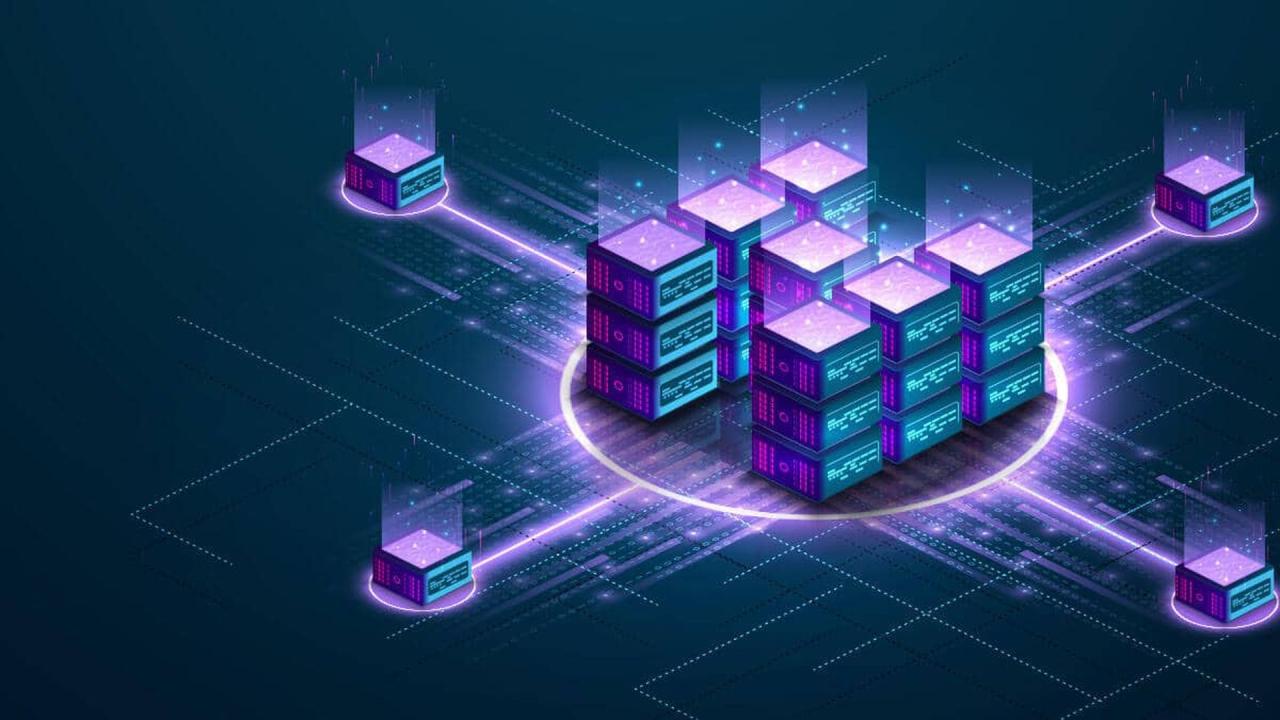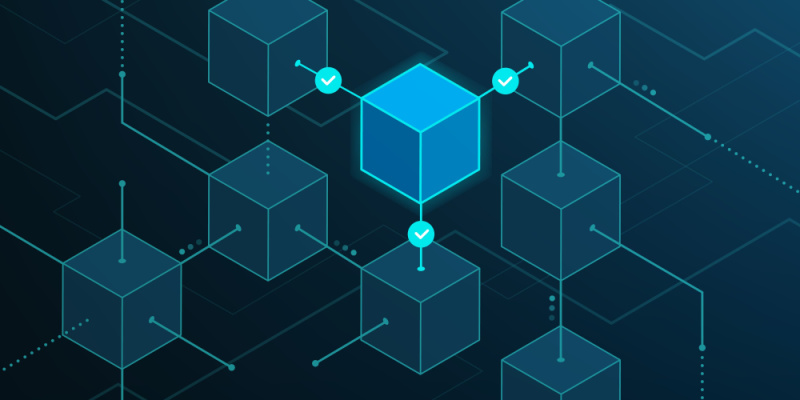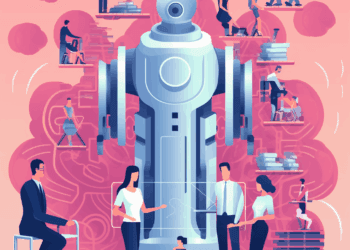In an increasingly digital world, where every interaction, from financial transfers to supply chain movements, leaves a digital trace, the demand for transparency, immutability, and trust has never been higher. At the forefront of meeting this demand is Blockchain, a revolutionary technology that is fundamentally redefining how transactions are recorded and verified. Far from being confined to cryptocurrencies, blockchain’s unique architecture is transforming industries globally by offering an unprecedented level of security, efficiency, and verifiable trust in digital interactions. This comprehensive article delves into the core principles of blockchain technology, exploring its foundational elements, its diverse applications across various sectors,, and the critical challenges that accompany its widespread adoption.
What is Blockchain Technology?

At its essence, blockchain is a distributed, decentralized, and immutable ledger that records transactions across a network of computers. Unlike traditional centralized databases, where a single entity controls and stores information, a blockchain distributes copies of the ledger to every participant in the network. Each “block” in the chain contains a list of transactions, and once a block is filled, it’s cryptographically linked to the previous block, forming an unbroken “chain” of records. This creates a highly secure and transparent system.
The ingenuity of blockchain lies in its combination of several mature technologies:
- Distributed Ledger Technology (DLT): Instead of a central database, all participants in the network have access to the same, identical copy of the ledger. Any update to the ledger is reflected across all copies.
- Cryptography: Each block contains a cryptographic hash of the previous block, ensuring that any tampering with a past block would invalidate all subsequent blocks, making the ledger incredibly secure and tamper-proof. Public-key cryptography (digital signatures) verifies the authenticity of transactions.
- Decentralization: There’s no central authority controlling the network. Instead, consensus mechanisms (like Proof-of-Work or Proof-of-Stake) are used by network participants to validate new blocks and maintain the integrity of the chain.
- Immutability: Once a transaction is recorded on the blockchain, it cannot be altered or deleted. This creates a permanent and verifiable audit trail.
- Transparency (Pseudonymous): While user identities are typically pseudonymous (represented by cryptographic addresses), all transactions on a public blockchain are visible to anyone on the network.
A. Foundational Elements Powering Blockchain
The functionality of blockchain relies on several interconnected components, each playing a vital role in its security and operation.
- Distributed Ledger: This is the shared, synchronized, and replicated database accessible by multiple participants across different locations. Every participant has an identical copy of the ledger, and any updates are broadcast to all nodes, ensuring consistency and resilience against single points of failure.
- Cryptography (Hashing and Digital Signatures):
- Hashing: A cryptographic hash function takes an input (data) and returns a fixed-size string of characters (a hash value). Any tiny change in the input data results in a vastly different hash, making it impossible to tamper with a block without invalidating its hash and thus the entire chain.
- Digital Signatures: Participants use private and public key pairs to sign transactions. The private key signs the transaction, and the public key verifies the signature, ensuring the authenticity and non-repudiation of transactions.
- Blocks: These are fundamental units of the blockchain. Each block contains:
- A list of verified transactions.
- A timestamp.
- The cryptographic hash of the previous block.
- A nonce (a number used once) in Proof-of-Work systems, found through a computational puzzle.
- Chain: Blocks are linked together chronologically and cryptographically. The hash of the previous block is included in the current block, creating an unbroken and tamper-evident chain. This linkage is what gives blockchain its name.
- Consensus Mechanisms: These are algorithms used by network participants (nodes) to agree on the validity of transactions and the order of blocks, ensuring that all copies of the distributed ledger remain synchronized and secure. Common mechanisms include:
- Proof-of-Work (PoW): (e.g., Bitcoin, older Ethereum) Miners compete to solve a complex mathematical puzzle. The first to solve it gets to add the next block and earns a reward. This is energy-intensive.
- Proof-of-Stake (PoS): (e.g., Ethereum 2.0) Validators are chosen to create new blocks based on the amount of cryptocurrency they “stake” as collateral. This is more energy-efficient.
- Delegated Proof-of-Stake (DPoS), Proof-of-Authority (PoA), etc.: Other variations designed for specific use cases, often balancing decentralization with speed and scalability.
- Nodes: Computers that run the blockchain software and participate in the network. Nodes store a copy of the ledger, validate transactions, and contribute to the consensus mechanism. Full nodes store the entire history of the blockchain.
- Smart Contracts: Self-executing contracts with the terms of the agreement directly written into lines of code. They run on a blockchain and automatically execute actions when predefined conditions are met, eliminating the need for intermediaries and ensuring transparent execution.
Blockchain’s Transformative Impact Across Industries
Blockchain’s unique attributes of security, transparency, and immutability are revolutionizing operations, fostering trust, and creating new business models across a diverse array of sectors.
A. Finance and Banking
Blockchain’s origins are deeply rooted in finance with Bitcoin, and its potential to disrupt traditional banking is immense.
- Cryptocurrencies: Digital currencies like Bitcoin and Ethereum offer decentralized, peer-to-peer transactions without the need for intermediaries, enabling faster, cheaper, and borderless payments.
- Decentralized Finance (DeFi): An ecosystem of financial applications built on blockchain that aims to recreate traditional financial services (lending, borrowing, trading, insurance) in a transparent, permissionless, and open manner, removing central authorities.
- Cross-Border Payments: Blockchain can drastically reduce the time and cost associated with international money transfers by eliminating multiple intermediaries and facilitating real-time settlement.
- Trade Finance: Streamlining complex trade finance processes by creating a transparent, immutable record of transactions, documents, and agreements, reducing fraud and increasing efficiency for all parties involved.
- Tokenization of Assets: Representing real-world assets (e.g., real estate, art, bonds) or traditional financial instruments as digital tokens on a blockchain. This can enable fractional ownership, increase liquidity, and simplify transfer.
- Securities Trading and Settlement: Blockchain can accelerate the settlement of securities trades from days to minutes, reducing counterparty risk and operational costs.
B. Supply Chain Management
Blockchain offers unprecedented transparency and traceability throughout complex supply chains, benefiting businesses and consumers alike.
- End-to-End Traceability: Products can be tracked from their origin (e.g., farm, mine) through every stage of production, logistics, and distribution to the consumer. Every transfer of ownership or change in condition is immutably recorded.
- Authenticity and Anti-Counterfeiting: Consumers can verify the authenticity and provenance of products by scanning QR codes linked to blockchain records, combating counterfeiting in industries like luxury goods, pharmaceuticals, and food.
- Food Safety: In the event of a food recall, blockchain can quickly identify the exact source of contamination, enabling targeted recalls and minimizing public health risks and economic damage.
- Ethical Sourcing: Ensuring that goods are ethically sourced (e.g., conflict-free minerals, fair-trade coffee) by providing a transparent and verifiable record of their journey.
- Automated Payments (Smart Contracts): Payments can be automatically triggered via smart contracts when specific conditions are met (e.g., goods received, quality check passed), streamlining financial flows in the supply chain.
C. Healthcare
Blockchain holds significant promise for healthcare by enhancing data security, interoperability, and patient control over their medical information.
- Secure Patient Records: Medical records can be stored cryptographically on a blockchain, with patients controlling who has access to their data via private keys. This enhances security and privacy while allowing authorized sharing for consultations or emergencies.
- Interoperability of Health Data: Blockchain can facilitate the secure and standardized sharing of medical data between different healthcare providers, hospitals, and research institutions, breaking down data silos and improving continuity of care.
- Clinical Trial Management: Enhancing the integrity and transparency of clinical trials by immutably recording data, patient consent, and results, which can accelerate drug discovery and prevent data manipulation.
- Supply Chain for Pharmaceuticals: Tracking the journey of drugs from manufacturing to pharmacies on a blockchain can combat counterfeit medications, ensure proper storage conditions, and enhance patient safety.
- Patient-Centric Data Management: Empowering patients with greater control and ownership over their health data, allowing them to grant or revoke access and even potentially monetize their anonymized data for research purposes.
D. Real Estate
Blockchain can streamline the often complex and paperwork-heavy real estate industry.
- Property Title Management: Recording property titles on a blockchain can create an immutable, transparent, and verifiable record of ownership, reducing fraud, speeding up transactions, and lowering legal fees.
- Fractional Ownership: Tokenizing real estate allows for fractional ownership, making property investment more accessible to a broader range of investors and increasing liquidity.
- Smart Contracts for Agreements: Automating elements of property sales, rentals, and mortgage agreements through self-executing smart contracts, reducing the need for intermediaries and speeding up processes.
- Due Diligence: Providing secure, verifiable access to property historical data, surveys, and legal documents, simplifying the due diligence process.
E. Voting Systems
Blockchain offers a path towards more secure, transparent, and verifiable voting systems.
- Enhanced Security: Cryptographic security ensures that votes cannot be tampered with once cast and recorded on the blockchain.
- Transparency and Auditability: The immutable ledger allows for transparent auditing of vote counts, increasing public trust in election results.
- Voter Identity Verification: Securely verifying voter identities while potentially maintaining anonymity of individual votes.
- Accessibility: Blockchain-based voting could potentially make voting more accessible for remote voters or those with disabilities, while maintaining integrity.
F. Digital Identity and Data Ownership: Self-Sovereignty
Blockchain is pivotal in the movement towards self-sovereign digital identity, where individuals control their own data and credentials.
- Decentralized Identifiers (DIDs): Users control their own unique, cryptographically secured identifiers, rather than relying on centralized identity providers (like Google or Facebook logins).
- Verifiable Credentials: Digital proofs of attributes (e.g., educational degrees, professional licenses, age confirmation) that can be cryptographically verified without revealing unnecessary personal data.
- User-Controlled Data: Individuals can grant or revoke access to their personal data stored on blockchain-linked systems, reclaiming ownership from corporations.
- Reputation Systems: On-chain activity and verifiable credentials can contribute to a user’s digital reputation, which can be portable across various decentralized applications.
Challenges and Considerations in the Blockchain Era

Despite its immense promise, the widespread adoption of blockchain technology faces significant hurdles and critical ethical considerations that demand careful attention and proactive solutions.
A. Scalability and Performance Issues
- Transaction Throughput: Many public blockchains, especially those relying on Proof-of-Work, can process a limited number of transactions per second compared to traditional centralized systems (e.g., Visa). This limits their ability to handle large-scale applications.
- High Transaction Costs (Gas Fees): During periods of high network congestion, transaction fees (known as “gas fees” on Ethereum) can become prohibitively expensive, making micro-transactions or frequent interactions impractical.
- Latency: The time it takes for a transaction to be confirmed and added to a block can still be minutes or even longer, which is unacceptable for real-time applications.
- Data Storage Limitations: Storing large amounts of data directly on a blockchain is expensive and inefficient. Solutions often involve storing data off-chain and only putting cryptographic hashes on the blockchain.
B. Regulatory and Legal Uncertainty
- Lack of Clear Regulation: Governments worldwide are still grappling with how to classify and regulate cryptocurrencies, NFTs, DeFi, and DAOs. This uncertainty creates legal risks and can hinder institutional adoption.
- Jurisdictional Issues: The decentralized and borderless nature of blockchain makes it difficult to apply traditional national laws and regulations, leading to complex jurisdictional questions.
- Consumer Protection: In a decentralized ecosystem with no central authority, mechanisms for consumer protection, dispute resolution, and recourse in case of fraud or error are still nascent.
- Taxation: The taxation of cryptocurrencies and NFTs varies widely by jurisdiction and is often complex, posing challenges for users and businesses.
C. Security Risks and User Experience
- Smart Contract Vulnerabilities: Bugs or flaws in the code of smart contracts can lead to significant financial losses, as these contracts are self-executing and immutable once deployed. This has led to multi-million dollar hacks.
- Wallet Security: Users are responsible for the security of their private keys, which control access to their crypto assets. Lost keys or compromised wallets can result in irreversible loss of funds.
- Phishing and Scams: The decentralized nature doesn’t prevent social engineering attacks. Users are constantly targeted by phishing scams, fake websites, and fraudulent projects.
- User Experience (UX): Interacting with blockchain applications (DApps) often requires managing crypto wallets, understanding gas fees, and navigating complex interfaces, presenting a steep learning curve for average users.
- Private Key Management: The responsibility of managing private keys is a significant barrier for many, as losing a key means losing access to assets, and there’s no “forgot password” option.
D. Environmental Concerns
- Energy Consumption (Proof-of-Work): Blockchains relying on Proof-of-Work consensus mechanisms (like Bitcoin) consume vast amounts of electricity, raising concerns about their environmental impact. (Note: Many newer blockchains and Ethereum 2.0 have moved to more energy-efficient Proof-of-Stake).
- Carbon Footprint: The energy consumption translates to a significant carbon footprint, pushing for more sustainable blockchain solutions.
E. Governance and Decentralization Challenges
- Centralization Risks: While aiming for decentralization, some blockchain networks can exhibit elements of centralization (e.g., concentrated mining power, large token holders influencing DAOs), posing risks to their core principles.
- DAO Governance Effectiveness: Managing complex projects through decentralized autonomous organizations (DAOs) can be slow, prone to voter apathy, or influenced by “whales” (large token holders), making decision-making challenging.
- Identity and Anonymity: While blockchain offers pseudonymous transactions, sophisticated analysis can sometimes de-anonymize users. Striking a balance between privacy and regulatory compliance (e.g., anti-money laundering) is ongoing.
Conclusion
Blockchain technology is far more than just the backbone of cryptocurrencies; it is a profound architectural innovation fundamentally redefining how trust, transparency, and security are established in our digital world. By creating an immutable, decentralized, and cryptographically secured ledger, blockchain offers an unprecedented solution to the challenges of data integrity and verifiable transactions across industries. From revolutionizing financial systems and enhancing supply chain traceability to securing healthcare data and enabling new forms of digital identity, blockchain’s pervasive influence is undeniable and rapidly expanding.
However, the journey towards widespread blockchain adoption must be navigated with careful consideration. Addressing the formidable challenges of scalability, regulatory uncertainty, security vulnerabilities, and ensuring user-friendliness are essential for its long-term success. By fostering collaboration among developers, policymakers, educators, and industry leaders, we can ensure that blockchain technology is developed and deployed responsibly, securing our digital transactions and building a more transparent, efficient, and trustworthy future for all. Blockchain isn’t just securing transactions; it’s securing our trust in the digital age.












